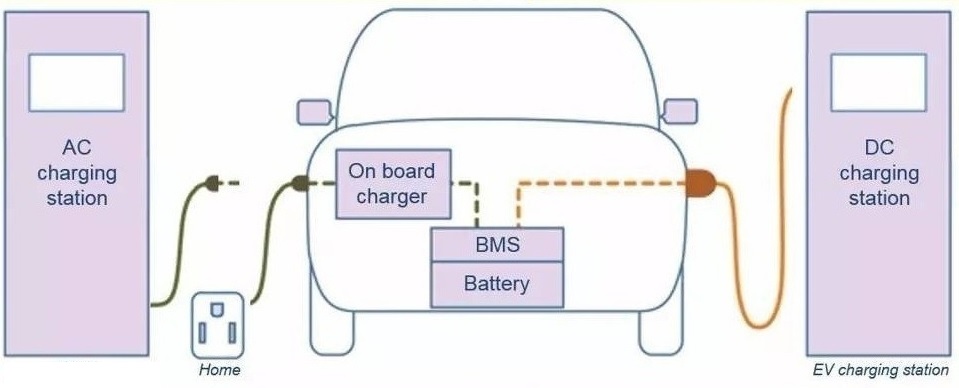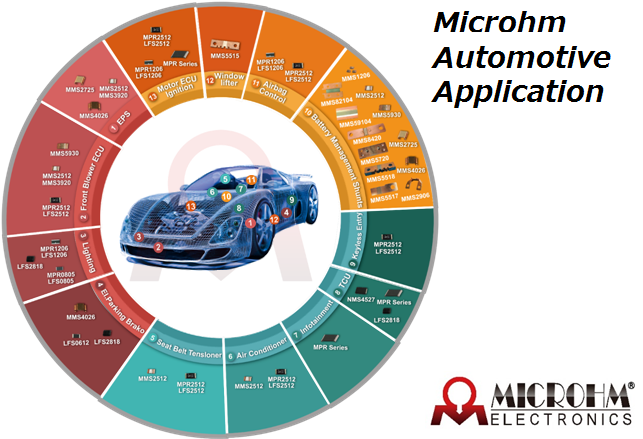Position:Home » Industry News
Choose Right Resistors for Electric Vehicles
Writer:Microhm Page View:Date:2019-08-05
The first step for automotive manufacturers looking to purchase a resistor is to analyse its purpose. If it is to be used for discharging excess energy produced during dynamic braking and heating the cabin, we would advise a liquid-cooled resistor. Discharged energy is transferred as heat to the liquid coolant, which can then be circulated to the vehicle’s heating system. Besides liquid-cooled resistor, power resistor, braking resistors, shunt resistors from well-known suppliers like Micrhm are also used in the automotives.

This is an effective use of energy that would otherwise be lost. It also reduces the need for an electrical heating system that uses the battery’s energy and cuts the vehicle’s range. Based on an average estimation of the braking power needed for a car, a liquid-cooled resistor used for both applications will require a power rating of 7-10kW. Larger vehicles such as trucks or vans will require a higher rating.
Most electric vehicles will use regenerative braking, which recuperates energy lost through braking and returns it to the battery to increase the range. However, when the battery is full, the vehicle must rely on its mechanical friction braking system to slow down or stop.
Instead, it would be more beneficial to use a resistor to discharge the excess energy. Not only would the resistor be useful in the event of an electrical fault, it would also reduce servicing costs owing to reduced wear on the friction braking system.
The energy dissipated during dynamic braking into the resistor can also be used to heat the cabin or trailer, reducing the requirement for electrical heating, which places an extra load on the battery. In addition to ensuring a sufficient power rating, a vehicle manufacturer buying a liquid-cooled resistor must take pressure drop into account. Within the resistor, liquid flows between the inlet and outlet to remove excess heat.

Often this flow will be through channels that may have additional obstacles inside. This causes the pressure of the pumped fluid to drop between the inlet and outlet and, if the pressure becomes too low, the flow will not be sustained. A trade-off exists between efficient cooling, which allows a resistor to have a higher power rating, and pressure drop. Resistors with a higher power rating will also experience higher power drop. For larger vehicles, which require the highest power rating, it may be possible to use an additional auxiliary pump. However, smaller vehicles are often limited in space and the pressure drop experienced by a resistor with a higher power rating might be unacceptable. The design of the vehicle and placement of resistor could also dictate the choices.

This is an effective use of energy that would otherwise be lost. It also reduces the need for an electrical heating system that uses the battery’s energy and cuts the vehicle’s range. Based on an average estimation of the braking power needed for a car, a liquid-cooled resistor used for both applications will require a power rating of 7-10kW. Larger vehicles such as trucks or vans will require a higher rating.
Most electric vehicles will use regenerative braking, which recuperates energy lost through braking and returns it to the battery to increase the range. However, when the battery is full, the vehicle must rely on its mechanical friction braking system to slow down or stop.
Instead, it would be more beneficial to use a resistor to discharge the excess energy. Not only would the resistor be useful in the event of an electrical fault, it would also reduce servicing costs owing to reduced wear on the friction braking system.
The energy dissipated during dynamic braking into the resistor can also be used to heat the cabin or trailer, reducing the requirement for electrical heating, which places an extra load on the battery. In addition to ensuring a sufficient power rating, a vehicle manufacturer buying a liquid-cooled resistor must take pressure drop into account. Within the resistor, liquid flows between the inlet and outlet to remove excess heat.

Often this flow will be through channels that may have additional obstacles inside. This causes the pressure of the pumped fluid to drop between the inlet and outlet and, if the pressure becomes too low, the flow will not be sustained. A trade-off exists between efficient cooling, which allows a resistor to have a higher power rating, and pressure drop. Resistors with a higher power rating will also experience higher power drop. For larger vehicles, which require the highest power rating, it may be possible to use an additional auxiliary pump. However, smaller vehicles are often limited in space and the pressure drop experienced by a resistor with a higher power rating might be unacceptable. The design of the vehicle and placement of resistor could also dictate the choices.
Keywords:
Latest News
- Resistor's role in measuring and correcting LED,,,
- Single through-hole resistors' characteristics ,,,
- Why shunt resistors for current sense applicati,,,
- Metal-film resistors with small size, high resi,,,
- 36W High-Current Shunt Resistors MMS8420,,,
- 1W Surface Mount Resistor MPR1206,,,
- An Overview of Microhm Electronics' Resistor Pr,,,
- More anti-sulfur resistors used in harsh envir,,,
- Resistance changes with temperature,,,
- 140W TO247 High Power Heatsinkable Resistor,,,
- MMS5930 is ideal for current sensing in industr,,,
- Shunt resistors selection for engineers' design,,,
- Considerations for choosing precision resistors,,,
- Ceramic Encased Cement Resistors NWH Series for,,,
- Resistors for Passive Balancing in Battery-Pow,,,
Hot Articles
- Microhm will take part in 10th Automotive World,,,
- Thanks for Visiting Microhm's Booth E5-5706 in ,,,
- Resistors in Short Supply: Blame Cars,,,
- New lunch: High Power Precision Shunt Resistor,,,,
- How to Test a Resistor,,,
- Innovative Technology, Future Electric: Electri,,,
- What is Precision Resistors?,,,
- SMD Resistors Sizes and Packages,,,
- The Construction and Features of Metal Film Res,,,
- What is a TO-220 Resisor?,,,
- Hot Selling Products: Precision Shunt Resistors,,,
- How to Calculate the Equivalent Resistance Valu,,,
- What is a Fixed Resistor?,,,
- Resistors in LED Circuits,,,
- Resistors Types and Materials Overview,,,
Resistance applications
- Difference Between High Precision Resistors and,,,
- The Measurement Accuracy of Automotive Shunt is,,,
- Select the Right Resistor for Harmonic Filterin,,,
- Carbon Film Resistors' Features and Application,,,
- Precision Resistors' Construction and TCR,,,
- Urbanization Development Bringing the Transform,,,
- Surface Mount Resistor's Size and Package ,,,
- The Main Application for High Precision and Low,,,
- The Four Important Functions of Alloy Resistors,,,
- Heater Blower Motor Resistor in Air Conditioner,,,
- Why Zero-Ohm Resistors?,,,
- Shunt Resistor MMS8420 for High Current Stable ,,,
- Miniature future for passive electronic compone,,,
- BMS for New Energy Vehicle,,,
- Industrial Roberts Applied to Solar Photovoltai,,,
